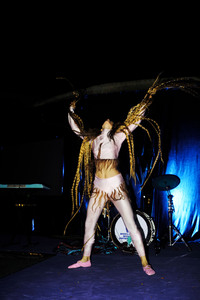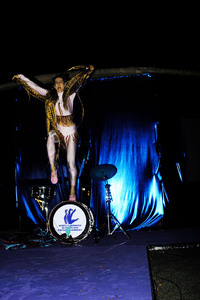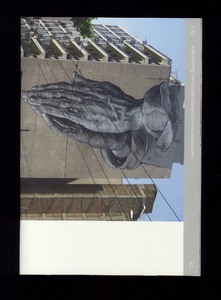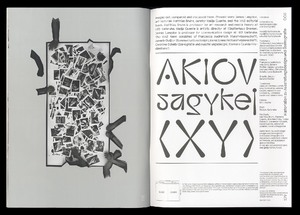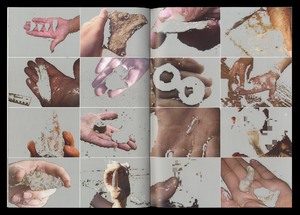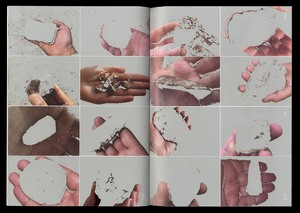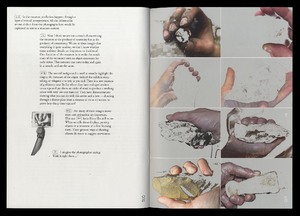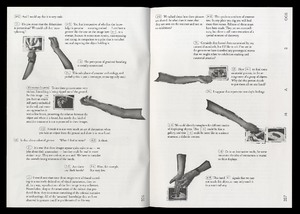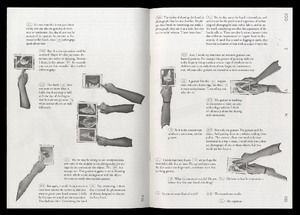Klemens Czurda
| Name | Klemens Czurda |
29 Inhalte
- Seite 1 von 3
WWWE Fotografien
- Titel
- WWWE Fotografien
- Autor/in
- Kategorie
- Schlagworte
- Titel
- WWWE Fotografien
- Titel (en)
- WWWE Photographs
- Urheberrechtshinweis
- © Hanna Scherwinski
- Rechtsschutz/Lizenz
- Freigabe Nutzung HfG
- Medienersteller/in
- Beziehung/Funktion
- Projektleiter/in
- Semester
- Studiengang
- Typ der Abschlussarbeit
- Importiert am
- 13.06.2024
- Übergeordnete Sets
- 1
WWWE Fotografien
- Titel
- WWWE Fotografien
- Autor/in
- Kategorie
- Schlagworte
- Titel
- WWWE Fotografien
- Titel (en)
- WWWE Photographs
- Urheberrechtshinweis
- © Hanna Scherwinski
- Rechtsschutz/Lizenz
- Freigabe Nutzung HfG
- Medienersteller/in
- Beziehung/Funktion
- Projektleiter/in
- Semester
- Studiengang
- Typ der Abschlussarbeit
- Importiert am
- 13.06.2024
- Übergeordnete Sets
- 1
WWWE Fotografien
- Titel
- WWWE Fotografien
- Autor/in
- Kategorie
- Schlagworte
- Titel
- WWWE Fotografien
- Titel (en)
- WWWE Photographs
- Urheberrechtshinweis
- © Hanna Scherwinski
- Rechtsschutz/Lizenz
- Freigabe Nutzung HfG
- Medienersteller/in
- Beziehung/Funktion
- Projektleiter/in
- Semester
- Studiengang
- Typ der Abschlussarbeit
- Importiert am
- 13.06.2024
- Übergeordnete Sets
- 1
WWWE Fotografien
- Titel
- WWWE Fotografien
- Autor/in
- Kategorie
- Schlagworte
- Titel
- WWWE Fotografien
- Titel (en)
- WWWE Photographs
- Urheberrechtshinweis
- © Hanna Scherwinski
- Rechtsschutz/Lizenz
- Freigabe Nutzung HfG
- Medienersteller/in
- Beziehung/Funktion
- Projektleiter/in
- Semester
- Studiengang
- Typ der Abschlussarbeit
- Importiert am
- 13.06.2024
- Übergeordnete Sets
- 1
MAS 005
- Titel
- MAS 005
- Untertitel
- Gestures and Displays
- Autor/in
- Beschreibung (de)
- Ausgangspunkt für diese Ausgabe ist eine Sammlung digitaler Bilder, die dem Designer James Langdon gehört. Diese Bilder - etwa 300 - gehören zu einer bestimmten Art von Bildern, die man häufig auf Websites und in Foren für Amateurarchäologie findet. Sie zeigen Gegenstände, die einst im Boden vergraben waren und nun ausgegraben und der Kamera präsentiert werden. Die Objekte selbst sind unterschiedlich und wahrscheinlich nicht wertvoll. Was diese Sammlung jedoch ausmacht, sind die Hände, die die Objekte halten: ihre Posen, Gesten und die Botschaften, die sie zu vermitteln scheinen.
Es sind Gesten der Darstellung. Die Positionen der Hände - flache, offene Handflächen; Griffe und Verschlüsse; anbietende und zeigende Zeichen - dienen als Rahmen, um die Objekte, die sie halten, zu vermitteln. Die Kamera erzwingt, dass es sich um kommunikative Gesten handelt, aber auch hier gibt es etwas Unmittelbares. Von Menschen gestaltete Objekte signalisieren anderen Menschen. Selbst die primitivsten Werkzeuge signalisieren unseren Händen: Nehmt mich, begehrt mich, seht mich an. In diesen Fotografien werden wir Zeuge des Empfangs dieser Signale - manchmal zweifelhaft, manchmal deterministisch, manchmal spekulativ - und wir sehen die zirkuläre Dynamik zwischen Hand, Auge und Gehirn auf dem Bildschirm.
Um das auf den folgenden Seiten wiedergegebene Gespräch zu ermöglichen, wurden Abzüge aus der Bildsammlung auf einem großen Arbeitstisch in der HfG Karlsruhe angeordnet. Um den Tisch herum breitete eine Gruppe von Kommentatoren die Bilder aus, verglich und diskutierte sie. Anwesend waren James Langdon, der Kunsthistoriker Matthias Bruhn, die Kuratorin Nadja Quante und das MAS-Redaktionsteam. Matthias Bruhn ist Professor für Kunstforschung und Medientheorie an der HfG Karlsruhe. Nadja Quante ist künstlerische Leiterin am Künstlerhaus Bremen. James Langdon ist Professor für Kommunikationsdesign an der HfG Karlsruhe.
- Ausgangspunkt für diese Ausgabe ist eine Sammlung digitaler Bilder, die dem Designer James Langdon gehört. Diese Bilder - etwa 300 - gehören zu einer bestimmten Art von Bildern, die man häufig auf Websites und in Foren für Amateurarchäologie findet. Sie zeigen Gegenstände, die einst im Boden vergraben waren und nun ausgegraben und der Kamera präsentiert werden. Die Objekte selbst sind unterschiedlich und wahrscheinlich nicht wertvoll. Was diese Sammlung jedoch ausmacht, sind die Hände, die die Objekte halten: ihre Posen, Gesten und die Botschaften, die sie zu vermitteln scheinen.
- Beschreibung (en)
- The starting point for this issue is a collection of digital images belonging to designer James Langdon. These images — around 300 — are of a specific type, readily found on amateur archaeology websites and forums. They show objects once buried in the ground, now dug up and presented to the camera. The objects themselves are various and probably not valuable. What defines this collection, though, are the hands that hold the objects: their poses, gestures, and the messages they seem to convey.
These are gestures of display. The positions of the hands — flat, open palms; grips and closures; offering and pointing signs — serve as a frame to mediate the objects they hold. The camera forces these to be communicative gestures, but there is something immediate here too. Objects shaped by humans signal to other humans. Even the most primitive tools make affordances that signal to our hands: wield me, covet me, behold me. In these photographs we witness the reception of these signals — sometimes doubtful, sometimes deterministic, sometimes speculative — and we see the circular dynamic between hand, eye, and brain on display.
To facilitate the conversation reproduced on the following pages, prints from the image collection were arranged on a large working table in the HfG Karlsruhe. Around the table a group of commentators spread the images out, compared and discussed them. Present were James Langdon, art historian Matthias Bruhn, curator Nadja Quante, and the MAS editorial team. Matthias Bruhn is professor for art research and media theory at HfG Karlsruhe. Nadja Quante is artistic director at Künstlerhaus Bremen. James Langdon is professor for communication design at HfG Karlsruhe.
- The starting point for this issue is a collection of digital images belonging to designer James Langdon. These images — around 300 — are of a specific type, readily found on amateur archaeology websites and forums. They show objects once buried in the ground, now dug up and presented to the camera. The objects themselves are various and probably not valuable. What defines this collection, though, are the hands that hold the objects: their poses, gestures, and the messages they seem to convey.
- Typ des Projekts/Werks
- Schlagworte
- Mitwirkende
- Sprache
- Abmessungen
- DinA 4
- Ort: Institution
- Stadt
- Land
- Bemerkungen
- Heft 5: Gestures and Displays
2018-2020
Cover: Heike Schuppelius
Grafik Credits: Cécile Kobel und Severin Geißler
- Heft 5: Gestures and Displays
- Titel
- MAS 005
- Urheberrechtshinweis
- Ausstellungsdesign und Szenografie
- Rechtsschutz/Lizenz
- Beziehung/Funktion
- Projektleiter/in
- Lehrveranstaltung
- Importiert am
- 15.12.2023
- Übergeordnete Sets
- 1
MAS 005
- Titel
- MAS 005
- Untertitel
- Gestures and Displays
- Autor/in
- Beschreibung (de)
- Ausgangspunkt für diese Ausgabe ist eine Sammlung digitaler Bilder, die dem Designer James Langdon gehört. Diese Bilder - etwa 300 - gehören zu einer bestimmten Art von Bildern, die man häufig auf Websites und in Foren für Amateurarchäologie findet. Sie zeigen Gegenstände, die einst im Boden vergraben waren und nun ausgegraben und der Kamera präsentiert werden. Die Objekte selbst sind unterschiedlich und wahrscheinlich nicht wertvoll. Was diese Sammlung jedoch ausmacht, sind die Hände, die die Objekte halten: ihre Posen, Gesten und die Botschaften, die sie zu vermitteln scheinen.
Es sind Gesten der Darstellung. Die Positionen der Hände - flache, offene Handflächen; Griffe und Verschlüsse; anbietende und zeigende Zeichen - dienen als Rahmen, um die Objekte, die sie halten, zu vermitteln. Die Kamera erzwingt, dass es sich um kommunikative Gesten handelt, aber auch hier gibt es etwas Unmittelbares. Von Menschen gestaltete Objekte signalisieren anderen Menschen. Selbst die primitivsten Werkzeuge signalisieren unseren Händen: Nehmt mich, begehrt mich, seht mich an. In diesen Fotografien werden wir Zeuge des Empfangs dieser Signale - manchmal zweifelhaft, manchmal deterministisch, manchmal spekulativ - und wir sehen die zirkuläre Dynamik zwischen Hand, Auge und Gehirn auf dem Bildschirm.
Um das auf den folgenden Seiten wiedergegebene Gespräch zu ermöglichen, wurden Abzüge aus der Bildsammlung auf einem großen Arbeitstisch in der HfG Karlsruhe angeordnet. Um den Tisch herum breitete eine Gruppe von Kommentatoren die Bilder aus, verglich und diskutierte sie. Anwesend waren James Langdon, der Kunsthistoriker Matthias Bruhn, die Kuratorin Nadja Quante und das MAS-Redaktionsteam. Matthias Bruhn ist Professor für Kunstforschung und Medientheorie an der HfG Karlsruhe. Nadja Quante ist künstlerische Leiterin am Künstlerhaus Bremen. James Langdon ist Professor für Kommunikationsdesign an der HfG Karlsruhe.
- Ausgangspunkt für diese Ausgabe ist eine Sammlung digitaler Bilder, die dem Designer James Langdon gehört. Diese Bilder - etwa 300 - gehören zu einer bestimmten Art von Bildern, die man häufig auf Websites und in Foren für Amateurarchäologie findet. Sie zeigen Gegenstände, die einst im Boden vergraben waren und nun ausgegraben und der Kamera präsentiert werden. Die Objekte selbst sind unterschiedlich und wahrscheinlich nicht wertvoll. Was diese Sammlung jedoch ausmacht, sind die Hände, die die Objekte halten: ihre Posen, Gesten und die Botschaften, die sie zu vermitteln scheinen.
- Beschreibung (en)
- The starting point for this issue is a collection of digital images belonging to designer James Langdon. These images — around 300 — are of a specific type, readily found on amateur archaeology websites and forums. They show objects once buried in the ground, now dug up and presented to the camera. The objects themselves are various and probably not valuable. What defines this collection, though, are the hands that hold the objects: their poses, gestures, and the messages they seem to convey.
These are gestures of display. The positions of the hands — flat, open palms; grips and closures; offering and pointing signs — serve as a frame to mediate the objects they hold. The camera forces these to be communicative gestures, but there is something immediate here too. Objects shaped by humans signal to other humans. Even the most primitive tools make affordances that signal to our hands: wield me, covet me, behold me. In these photographs we witness the reception of these signals — sometimes doubtful, sometimes deterministic, sometimes speculative — and we see the circular dynamic between hand, eye, and brain on display.
To facilitate the conversation reproduced on the following pages, prints from the image collection were arranged on a large working table in the HfG Karlsruhe. Around the table a group of commentators spread the images out, compared and discussed them. Present were James Langdon, art historian Matthias Bruhn, curator Nadja Quante, and the MAS editorial team. Matthias Bruhn is professor for art research and media theory at HfG Karlsruhe. Nadja Quante is artistic director at Künstlerhaus Bremen. James Langdon is professor for communication design at HfG Karlsruhe.
- The starting point for this issue is a collection of digital images belonging to designer James Langdon. These images — around 300 — are of a specific type, readily found on amateur archaeology websites and forums. They show objects once buried in the ground, now dug up and presented to the camera. The objects themselves are various and probably not valuable. What defines this collection, though, are the hands that hold the objects: their poses, gestures, and the messages they seem to convey.
- Typ des Projekts/Werks
- Schlagworte
- Mitwirkende
- Sprache
- Abmessungen
- DinA 4
- Ort: Institution
- Stadt
- Land
- Bemerkungen
- Heft 5: Gestures and Displays
2018-2020
Cover: Heike Schuppelius
Grafik Credits: Cécile Kobel und Severin Geißler
- Heft 5: Gestures and Displays
- Titel
- MAS 005
- Urheberrechtshinweis
- Ausstellungsdesign und Szenografie
- Rechtsschutz/Lizenz
- Beziehung/Funktion
- Projektleiter/in
- Lehrveranstaltung
- Importiert am
- 15.12.2023
- Übergeordnete Sets
- 1
MAS 005
- Titel
- MAS 005
- Untertitel
- Gestures and Displays
- Autor/in
- Beschreibung (de)
- Ausgangspunkt für diese Ausgabe ist eine Sammlung digitaler Bilder, die dem Designer James Langdon gehört. Diese Bilder - etwa 300 - gehören zu einer bestimmten Art von Bildern, die man häufig auf Websites und in Foren für Amateurarchäologie findet. Sie zeigen Gegenstände, die einst im Boden vergraben waren und nun ausgegraben und der Kamera präsentiert werden. Die Objekte selbst sind unterschiedlich und wahrscheinlich nicht wertvoll. Was diese Sammlung jedoch ausmacht, sind die Hände, die die Objekte halten: ihre Posen, Gesten und die Botschaften, die sie zu vermitteln scheinen.
Es sind Gesten der Darstellung. Die Positionen der Hände - flache, offene Handflächen; Griffe und Verschlüsse; anbietende und zeigende Zeichen - dienen als Rahmen, um die Objekte, die sie halten, zu vermitteln. Die Kamera erzwingt, dass es sich um kommunikative Gesten handelt, aber auch hier gibt es etwas Unmittelbares. Von Menschen gestaltete Objekte signalisieren anderen Menschen. Selbst die primitivsten Werkzeuge signalisieren unseren Händen: Nehmt mich, begehrt mich, seht mich an. In diesen Fotografien werden wir Zeuge des Empfangs dieser Signale - manchmal zweifelhaft, manchmal deterministisch, manchmal spekulativ - und wir sehen die zirkuläre Dynamik zwischen Hand, Auge und Gehirn auf dem Bildschirm.
Um das auf den folgenden Seiten wiedergegebene Gespräch zu ermöglichen, wurden Abzüge aus der Bildsammlung auf einem großen Arbeitstisch in der HfG Karlsruhe angeordnet. Um den Tisch herum breitete eine Gruppe von Kommentatoren die Bilder aus, verglich und diskutierte sie. Anwesend waren James Langdon, der Kunsthistoriker Matthias Bruhn, die Kuratorin Nadja Quante und das MAS-Redaktionsteam. Matthias Bruhn ist Professor für Kunstforschung und Medientheorie an der HfG Karlsruhe. Nadja Quante ist künstlerische Leiterin am Künstlerhaus Bremen. James Langdon ist Professor für Kommunikationsdesign an der HfG Karlsruhe.
- Ausgangspunkt für diese Ausgabe ist eine Sammlung digitaler Bilder, die dem Designer James Langdon gehört. Diese Bilder - etwa 300 - gehören zu einer bestimmten Art von Bildern, die man häufig auf Websites und in Foren für Amateurarchäologie findet. Sie zeigen Gegenstände, die einst im Boden vergraben waren und nun ausgegraben und der Kamera präsentiert werden. Die Objekte selbst sind unterschiedlich und wahrscheinlich nicht wertvoll. Was diese Sammlung jedoch ausmacht, sind die Hände, die die Objekte halten: ihre Posen, Gesten und die Botschaften, die sie zu vermitteln scheinen.
- Beschreibung (en)
- The starting point for this issue is a collection of digital images belonging to designer James Langdon. These images — around 300 — are of a specific type, readily found on amateur archaeology websites and forums. They show objects once buried in the ground, now dug up and presented to the camera. The objects themselves are various and probably not valuable. What defines this collection, though, are the hands that hold the objects: their poses, gestures, and the messages they seem to convey.
These are gestures of display. The positions of the hands — flat, open palms; grips and closures; offering and pointing signs — serve as a frame to mediate the objects they hold. The camera forces these to be communicative gestures, but there is something immediate here too. Objects shaped by humans signal to other humans. Even the most primitive tools make affordances that signal to our hands: wield me, covet me, behold me. In these photographs we witness the reception of these signals — sometimes doubtful, sometimes deterministic, sometimes speculative — and we see the circular dynamic between hand, eye, and brain on display.
To facilitate the conversation reproduced on the following pages, prints from the image collection were arranged on a large working table in the HfG Karlsruhe. Around the table a group of commentators spread the images out, compared and discussed them. Present were James Langdon, art historian Matthias Bruhn, curator Nadja Quante, and the MAS editorial team. Matthias Bruhn is professor for art research and media theory at HfG Karlsruhe. Nadja Quante is artistic director at Künstlerhaus Bremen. James Langdon is professor for communication design at HfG Karlsruhe.
- The starting point for this issue is a collection of digital images belonging to designer James Langdon. These images — around 300 — are of a specific type, readily found on amateur archaeology websites and forums. They show objects once buried in the ground, now dug up and presented to the camera. The objects themselves are various and probably not valuable. What defines this collection, though, are the hands that hold the objects: their poses, gestures, and the messages they seem to convey.
- Typ des Projekts/Werks
- Schlagworte
- Mitwirkende
- Sprache
- Abmessungen
- DinA 4
- Ort: Institution
- Stadt
- Land
- Bemerkungen
- Heft 5: Gestures and Displays
2018-2020
Cover: Heike Schuppelius
Grafik Credits: Cécile Kobel und Severin Geißler
- Heft 5: Gestures and Displays
- Titel
- MAS 005
- Urheberrechtshinweis
- Ausstellungsdesign und Szenografie
- Rechtsschutz/Lizenz
- Beziehung/Funktion
- Projektleiter/in
- Lehrveranstaltung
- Importiert am
- 15.12.2023
- Übergeordnete Sets
- 1
MAS 005
- Titel
- MAS 005
- Untertitel
- Gestures and Displays
- Autor/in
- Beschreibung (de)
- Ausgangspunkt für diese Ausgabe ist eine Sammlung digitaler Bilder, die dem Designer James Langdon gehört. Diese Bilder - etwa 300 - gehören zu einer bestimmten Art von Bildern, die man häufig auf Websites und in Foren für Amateurarchäologie findet. Sie zeigen Gegenstände, die einst im Boden vergraben waren und nun ausgegraben und der Kamera präsentiert werden. Die Objekte selbst sind unterschiedlich und wahrscheinlich nicht wertvoll. Was diese Sammlung jedoch ausmacht, sind die Hände, die die Objekte halten: ihre Posen, Gesten und die Botschaften, die sie zu vermitteln scheinen.
Es sind Gesten der Darstellung. Die Positionen der Hände - flache, offene Handflächen; Griffe und Verschlüsse; anbietende und zeigende Zeichen - dienen als Rahmen, um die Objekte, die sie halten, zu vermitteln. Die Kamera erzwingt, dass es sich um kommunikative Gesten handelt, aber auch hier gibt es etwas Unmittelbares. Von Menschen gestaltete Objekte signalisieren anderen Menschen. Selbst die primitivsten Werkzeuge signalisieren unseren Händen: Nehmt mich, begehrt mich, seht mich an. In diesen Fotografien werden wir Zeuge des Empfangs dieser Signale - manchmal zweifelhaft, manchmal deterministisch, manchmal spekulativ - und wir sehen die zirkuläre Dynamik zwischen Hand, Auge und Gehirn auf dem Bildschirm.
Um das auf den folgenden Seiten wiedergegebene Gespräch zu ermöglichen, wurden Abzüge aus der Bildsammlung auf einem großen Arbeitstisch in der HfG Karlsruhe angeordnet. Um den Tisch herum breitete eine Gruppe von Kommentatoren die Bilder aus, verglich und diskutierte sie. Anwesend waren James Langdon, der Kunsthistoriker Matthias Bruhn, die Kuratorin Nadja Quante und das MAS-Redaktionsteam. Matthias Bruhn ist Professor für Kunstforschung und Medientheorie an der HfG Karlsruhe. Nadja Quante ist künstlerische Leiterin am Künstlerhaus Bremen. James Langdon ist Professor für Kommunikationsdesign an der HfG Karlsruhe.
- Ausgangspunkt für diese Ausgabe ist eine Sammlung digitaler Bilder, die dem Designer James Langdon gehört. Diese Bilder - etwa 300 - gehören zu einer bestimmten Art von Bildern, die man häufig auf Websites und in Foren für Amateurarchäologie findet. Sie zeigen Gegenstände, die einst im Boden vergraben waren und nun ausgegraben und der Kamera präsentiert werden. Die Objekte selbst sind unterschiedlich und wahrscheinlich nicht wertvoll. Was diese Sammlung jedoch ausmacht, sind die Hände, die die Objekte halten: ihre Posen, Gesten und die Botschaften, die sie zu vermitteln scheinen.
- Beschreibung (en)
- The starting point for this issue is a collection of digital images belonging to designer James Langdon. These images — around 300 — are of a specific type, readily found on amateur archaeology websites and forums. They show objects once buried in the ground, now dug up and presented to the camera. The objects themselves are various and probably not valuable. What defines this collection, though, are the hands that hold the objects: their poses, gestures, and the messages they seem to convey.
These are gestures of display. The positions of the hands — flat, open palms; grips and closures; offering and pointing signs — serve as a frame to mediate the objects they hold. The camera forces these to be communicative gestures, but there is something immediate here too. Objects shaped by humans signal to other humans. Even the most primitive tools make affordances that signal to our hands: wield me, covet me, behold me. In these photographs we witness the reception of these signals — sometimes doubtful, sometimes deterministic, sometimes speculative — and we see the circular dynamic between hand, eye, and brain on display.
To facilitate the conversation reproduced on the following pages, prints from the image collection were arranged on a large working table in the HfG Karlsruhe. Around the table a group of commentators spread the images out, compared and discussed them. Present were James Langdon, art historian Matthias Bruhn, curator Nadja Quante, and the MAS editorial team. Matthias Bruhn is professor for art research and media theory at HfG Karlsruhe. Nadja Quante is artistic director at Künstlerhaus Bremen. James Langdon is professor for communication design at HfG Karlsruhe.
- The starting point for this issue is a collection of digital images belonging to designer James Langdon. These images — around 300 — are of a specific type, readily found on amateur archaeology websites and forums. They show objects once buried in the ground, now dug up and presented to the camera. The objects themselves are various and probably not valuable. What defines this collection, though, are the hands that hold the objects: their poses, gestures, and the messages they seem to convey.
- Typ des Projekts/Werks
- Schlagworte
- Mitwirkende
- Sprache
- Abmessungen
- DinA 4
- Ort: Institution
- Stadt
- Land
- Bemerkungen
- Heft 5: Gestures and Displays
2018-2020
Cover: Heike Schuppelius
Grafik Credits: Cécile Kobel und Severin Geißler
- Heft 5: Gestures and Displays
- Titel
- MAS 005
- Urheberrechtshinweis
- Ausstellungsdesign und Szenografie
- Rechtsschutz/Lizenz
- Beziehung/Funktion
- Projektleiter/in
- Lehrveranstaltung
- Importiert am
- 15.12.2023
- Übergeordnete Sets
- 1
MAS 005
- Titel
- MAS 005
- Untertitel
- Gestures and Displays
- Autor/in
- Beschreibung (de)
- Ausgangspunkt für diese Ausgabe ist eine Sammlung digitaler Bilder, die dem Designer James Langdon gehört. Diese Bilder - etwa 300 - gehören zu einer bestimmten Art von Bildern, die man häufig auf Websites und in Foren für Amateurarchäologie findet. Sie zeigen Gegenstände, die einst im Boden vergraben waren und nun ausgegraben und der Kamera präsentiert werden. Die Objekte selbst sind unterschiedlich und wahrscheinlich nicht wertvoll. Was diese Sammlung jedoch ausmacht, sind die Hände, die die Objekte halten: ihre Posen, Gesten und die Botschaften, die sie zu vermitteln scheinen.
Es sind Gesten der Darstellung. Die Positionen der Hände - flache, offene Handflächen; Griffe und Verschlüsse; anbietende und zeigende Zeichen - dienen als Rahmen, um die Objekte, die sie halten, zu vermitteln. Die Kamera erzwingt, dass es sich um kommunikative Gesten handelt, aber auch hier gibt es etwas Unmittelbares. Von Menschen gestaltete Objekte signalisieren anderen Menschen. Selbst die primitivsten Werkzeuge signalisieren unseren Händen: Nehmt mich, begehrt mich, seht mich an. In diesen Fotografien werden wir Zeuge des Empfangs dieser Signale - manchmal zweifelhaft, manchmal deterministisch, manchmal spekulativ - und wir sehen die zirkuläre Dynamik zwischen Hand, Auge und Gehirn auf dem Bildschirm.
Um das auf den folgenden Seiten wiedergegebene Gespräch zu ermöglichen, wurden Abzüge aus der Bildsammlung auf einem großen Arbeitstisch in der HfG Karlsruhe angeordnet. Um den Tisch herum breitete eine Gruppe von Kommentatoren die Bilder aus, verglich und diskutierte sie. Anwesend waren James Langdon, der Kunsthistoriker Matthias Bruhn, die Kuratorin Nadja Quante und das MAS-Redaktionsteam. Matthias Bruhn ist Professor für Kunstforschung und Medientheorie an der HfG Karlsruhe. Nadja Quante ist künstlerische Leiterin am Künstlerhaus Bremen. James Langdon ist Professor für Kommunikationsdesign an der HfG Karlsruhe.
- Ausgangspunkt für diese Ausgabe ist eine Sammlung digitaler Bilder, die dem Designer James Langdon gehört. Diese Bilder - etwa 300 - gehören zu einer bestimmten Art von Bildern, die man häufig auf Websites und in Foren für Amateurarchäologie findet. Sie zeigen Gegenstände, die einst im Boden vergraben waren und nun ausgegraben und der Kamera präsentiert werden. Die Objekte selbst sind unterschiedlich und wahrscheinlich nicht wertvoll. Was diese Sammlung jedoch ausmacht, sind die Hände, die die Objekte halten: ihre Posen, Gesten und die Botschaften, die sie zu vermitteln scheinen.
- Beschreibung (en)
- The starting point for this issue is a collection of digital images belonging to designer James Langdon. These images — around 300 — are of a specific type, readily found on amateur archaeology websites and forums. They show objects once buried in the ground, now dug up and presented to the camera. The objects themselves are various and probably not valuable. What defines this collection, though, are the hands that hold the objects: their poses, gestures, and the messages they seem to convey.
These are gestures of display. The positions of the hands — flat, open palms; grips and closures; offering and pointing signs — serve as a frame to mediate the objects they hold. The camera forces these to be communicative gestures, but there is something immediate here too. Objects shaped by humans signal to other humans. Even the most primitive tools make affordances that signal to our hands: wield me, covet me, behold me. In these photographs we witness the reception of these signals — sometimes doubtful, sometimes deterministic, sometimes speculative — and we see the circular dynamic between hand, eye, and brain on display.
To facilitate the conversation reproduced on the following pages, prints from the image collection were arranged on a large working table in the HfG Karlsruhe. Around the table a group of commentators spread the images out, compared and discussed them. Present were James Langdon, art historian Matthias Bruhn, curator Nadja Quante, and the MAS editorial team. Matthias Bruhn is professor for art research and media theory at HfG Karlsruhe. Nadja Quante is artistic director at Künstlerhaus Bremen. James Langdon is professor for communication design at HfG Karlsruhe.
- The starting point for this issue is a collection of digital images belonging to designer James Langdon. These images — around 300 — are of a specific type, readily found on amateur archaeology websites and forums. They show objects once buried in the ground, now dug up and presented to the camera. The objects themselves are various and probably not valuable. What defines this collection, though, are the hands that hold the objects: their poses, gestures, and the messages they seem to convey.
- Typ des Projekts/Werks
- Schlagworte
- Mitwirkende
- Sprache
- Abmessungen
- DinA 4
- Ort: Institution
- Stadt
- Land
- Bemerkungen
- Heft 5: Gestures and Displays
2018-2020
Cover: Heike Schuppelius
Grafik Credits: Cécile Kobel und Severin Geißler
- Heft 5: Gestures and Displays
- Titel
- MAS 005
- Urheberrechtshinweis
- Ausstellungsdesign und Szenografie
- Rechtsschutz/Lizenz
- Beziehung/Funktion
- Projektleiter/in
- Lehrveranstaltung
- Importiert am
- 15.12.2023
- Übergeordnete Sets
- 1
MAS 005
- Titel
- MAS 005
- Untertitel
- Gestures and Displays
- Autor/in
- Beschreibung (de)
- Ausgangspunkt für diese Ausgabe ist eine Sammlung digitaler Bilder, die dem Designer James Langdon gehört. Diese Bilder - etwa 300 - gehören zu einer bestimmten Art von Bildern, die man häufig auf Websites und in Foren für Amateurarchäologie findet. Sie zeigen Gegenstände, die einst im Boden vergraben waren und nun ausgegraben und der Kamera präsentiert werden. Die Objekte selbst sind unterschiedlich und wahrscheinlich nicht wertvoll. Was diese Sammlung jedoch ausmacht, sind die Hände, die die Objekte halten: ihre Posen, Gesten und die Botschaften, die sie zu vermitteln scheinen.
Es sind Gesten der Darstellung. Die Positionen der Hände - flache, offene Handflächen; Griffe und Verschlüsse; anbietende und zeigende Zeichen - dienen als Rahmen, um die Objekte, die sie halten, zu vermitteln. Die Kamera erzwingt, dass es sich um kommunikative Gesten handelt, aber auch hier gibt es etwas Unmittelbares. Von Menschen gestaltete Objekte signalisieren anderen Menschen. Selbst die primitivsten Werkzeuge signalisieren unseren Händen: Nehmt mich, begehrt mich, seht mich an. In diesen Fotografien werden wir Zeuge des Empfangs dieser Signale - manchmal zweifelhaft, manchmal deterministisch, manchmal spekulativ - und wir sehen die zirkuläre Dynamik zwischen Hand, Auge und Gehirn auf dem Bildschirm.
Um das auf den folgenden Seiten wiedergegebene Gespräch zu ermöglichen, wurden Abzüge aus der Bildsammlung auf einem großen Arbeitstisch in der HfG Karlsruhe angeordnet. Um den Tisch herum breitete eine Gruppe von Kommentatoren die Bilder aus, verglich und diskutierte sie. Anwesend waren James Langdon, der Kunsthistoriker Matthias Bruhn, die Kuratorin Nadja Quante und das MAS-Redaktionsteam. Matthias Bruhn ist Professor für Kunstforschung und Medientheorie an der HfG Karlsruhe. Nadja Quante ist künstlerische Leiterin am Künstlerhaus Bremen. James Langdon ist Professor für Kommunikationsdesign an der HfG Karlsruhe.
- Ausgangspunkt für diese Ausgabe ist eine Sammlung digitaler Bilder, die dem Designer James Langdon gehört. Diese Bilder - etwa 300 - gehören zu einer bestimmten Art von Bildern, die man häufig auf Websites und in Foren für Amateurarchäologie findet. Sie zeigen Gegenstände, die einst im Boden vergraben waren und nun ausgegraben und der Kamera präsentiert werden. Die Objekte selbst sind unterschiedlich und wahrscheinlich nicht wertvoll. Was diese Sammlung jedoch ausmacht, sind die Hände, die die Objekte halten: ihre Posen, Gesten und die Botschaften, die sie zu vermitteln scheinen.
- Beschreibung (en)
- The starting point for this issue is a collection of digital images belonging to designer James Langdon. These images — around 300 — are of a specific type, readily found on amateur archaeology websites and forums. They show objects once buried in the ground, now dug up and presented to the camera. The objects themselves are various and probably not valuable. What defines this collection, though, are the hands that hold the objects: their poses, gestures, and the messages they seem to convey.
These are gestures of display. The positions of the hands — flat, open palms; grips and closures; offering and pointing signs — serve as a frame to mediate the objects they hold. The camera forces these to be communicative gestures, but there is something immediate here too. Objects shaped by humans signal to other humans. Even the most primitive tools make affordances that signal to our hands: wield me, covet me, behold me. In these photographs we witness the reception of these signals — sometimes doubtful, sometimes deterministic, sometimes speculative — and we see the circular dynamic between hand, eye, and brain on display.
To facilitate the conversation reproduced on the following pages, prints from the image collection were arranged on a large working table in the HfG Karlsruhe. Around the table a group of commentators spread the images out, compared and discussed them. Present were James Langdon, art historian Matthias Bruhn, curator Nadja Quante, and the MAS editorial team. Matthias Bruhn is professor for art research and media theory at HfG Karlsruhe. Nadja Quante is artistic director at Künstlerhaus Bremen. James Langdon is professor for communication design at HfG Karlsruhe.
- The starting point for this issue is a collection of digital images belonging to designer James Langdon. These images — around 300 — are of a specific type, readily found on amateur archaeology websites and forums. They show objects once buried in the ground, now dug up and presented to the camera. The objects themselves are various and probably not valuable. What defines this collection, though, are the hands that hold the objects: their poses, gestures, and the messages they seem to convey.
- Typ des Projekts/Werks
- Schlagworte
- Mitwirkende
- Sprache
- Abmessungen
- DinA 4
- Ort: Institution
- Stadt
- Land
- Bemerkungen
- Heft 5: Gestures and Displays
2018-2020
Cover: Heike Schuppelius
Grafik Credits: Cécile Kobel und Severin Geißler
- Heft 5: Gestures and Displays
- Titel
- MAS 005
- Urheberrechtshinweis
- Ausstellungsdesign und Szenografie
- Rechtsschutz/Lizenz
- Beziehung/Funktion
- Projektleiter/in
- Lehrveranstaltung
- Importiert am
- 15.12.2023
- Übergeordnete Sets
- 1
MAS 005
- Titel
- MAS 005
- Untertitel
- Gestures and Displays
- Autor/in
- Beschreibung (de)
- Ausgangspunkt für diese Ausgabe ist eine Sammlung digitaler Bilder, die dem Designer James Langdon gehört. Diese Bilder - etwa 300 - gehören zu einer bestimmten Art von Bildern, die man häufig auf Websites und in Foren für Amateurarchäologie findet. Sie zeigen Gegenstände, die einst im Boden vergraben waren und nun ausgegraben und der Kamera präsentiert werden. Die Objekte selbst sind unterschiedlich und wahrscheinlich nicht wertvoll. Was diese Sammlung jedoch ausmacht, sind die Hände, die die Objekte halten: ihre Posen, Gesten und die Botschaften, die sie zu vermitteln scheinen.
Es sind Gesten der Darstellung. Die Positionen der Hände - flache, offene Handflächen; Griffe und Verschlüsse; anbietende und zeigende Zeichen - dienen als Rahmen, um die Objekte, die sie halten, zu vermitteln. Die Kamera erzwingt, dass es sich um kommunikative Gesten handelt, aber auch hier gibt es etwas Unmittelbares. Von Menschen gestaltete Objekte signalisieren anderen Menschen. Selbst die primitivsten Werkzeuge signalisieren unseren Händen: Nehmt mich, begehrt mich, seht mich an. In diesen Fotografien werden wir Zeuge des Empfangs dieser Signale - manchmal zweifelhaft, manchmal deterministisch, manchmal spekulativ - und wir sehen die zirkuläre Dynamik zwischen Hand, Auge und Gehirn auf dem Bildschirm.
Um das auf den folgenden Seiten wiedergegebene Gespräch zu ermöglichen, wurden Abzüge aus der Bildsammlung auf einem großen Arbeitstisch in der HfG Karlsruhe angeordnet. Um den Tisch herum breitete eine Gruppe von Kommentatoren die Bilder aus, verglich und diskutierte sie. Anwesend waren James Langdon, der Kunsthistoriker Matthias Bruhn, die Kuratorin Nadja Quante und das MAS-Redaktionsteam. Matthias Bruhn ist Professor für Kunstforschung und Medientheorie an der HfG Karlsruhe. Nadja Quante ist künstlerische Leiterin am Künstlerhaus Bremen. James Langdon ist Professor für Kommunikationsdesign an der HfG Karlsruhe.
- Ausgangspunkt für diese Ausgabe ist eine Sammlung digitaler Bilder, die dem Designer James Langdon gehört. Diese Bilder - etwa 300 - gehören zu einer bestimmten Art von Bildern, die man häufig auf Websites und in Foren für Amateurarchäologie findet. Sie zeigen Gegenstände, die einst im Boden vergraben waren und nun ausgegraben und der Kamera präsentiert werden. Die Objekte selbst sind unterschiedlich und wahrscheinlich nicht wertvoll. Was diese Sammlung jedoch ausmacht, sind die Hände, die die Objekte halten: ihre Posen, Gesten und die Botschaften, die sie zu vermitteln scheinen.
- Beschreibung (en)
- The starting point for this issue is a collection of digital images belonging to designer James Langdon. These images — around 300 — are of a specific type, readily found on amateur archaeology websites and forums. They show objects once buried in the ground, now dug up and presented to the camera. The objects themselves are various and probably not valuable. What defines this collection, though, are the hands that hold the objects: their poses, gestures, and the messages they seem to convey.
These are gestures of display. The positions of the hands — flat, open palms; grips and closures; offering and pointing signs — serve as a frame to mediate the objects they hold. The camera forces these to be communicative gestures, but there is something immediate here too. Objects shaped by humans signal to other humans. Even the most primitive tools make affordances that signal to our hands: wield me, covet me, behold me. In these photographs we witness the reception of these signals — sometimes doubtful, sometimes deterministic, sometimes speculative — and we see the circular dynamic between hand, eye, and brain on display.
To facilitate the conversation reproduced on the following pages, prints from the image collection were arranged on a large working table in the HfG Karlsruhe. Around the table a group of commentators spread the images out, compared and discussed them. Present were James Langdon, art historian Matthias Bruhn, curator Nadja Quante, and the MAS editorial team. Matthias Bruhn is professor for art research and media theory at HfG Karlsruhe. Nadja Quante is artistic director at Künstlerhaus Bremen. James Langdon is professor for communication design at HfG Karlsruhe.
- The starting point for this issue is a collection of digital images belonging to designer James Langdon. These images — around 300 — are of a specific type, readily found on amateur archaeology websites and forums. They show objects once buried in the ground, now dug up and presented to the camera. The objects themselves are various and probably not valuable. What defines this collection, though, are the hands that hold the objects: their poses, gestures, and the messages they seem to convey.
- Typ des Projekts/Werks
- Schlagworte
- Mitwirkende
- Sprache
- Abmessungen
- DinA 4
- Ort: Institution
- Stadt
- Land
- Bemerkungen
- Heft 5: Gestures and Displays
2018-2020
Cover: Heike Schuppelius
Grafik Credits: Cécile Kobel und Severin Geißler
- Heft 5: Gestures and Displays
- Titel
- MAS 005
- Urheberrechtshinweis
- Ausstellungsdesign und Szenografie
- Rechtsschutz/Lizenz
- Beziehung/Funktion
- Projektleiter/in
- Lehrveranstaltung
- Importiert am
- 15.12.2023
- Übergeordnete Sets
- 1
MAS 005
- Titel
- MAS 005
- Untertitel
- Gestures and Displays
- Autor/in
- Beschreibung (de)
- Ausgangspunkt für diese Ausgabe ist eine Sammlung digitaler Bilder, die dem Designer James Langdon gehört. Diese Bilder - etwa 300 - gehören zu einer bestimmten Art von Bildern, die man häufig auf Websites und in Foren für Amateurarchäologie findet. Sie zeigen Gegenstände, die einst im Boden vergraben waren und nun ausgegraben und der Kamera präsentiert werden. Die Objekte selbst sind unterschiedlich und wahrscheinlich nicht wertvoll. Was diese Sammlung jedoch ausmacht, sind die Hände, die die Objekte halten: ihre Posen, Gesten und die Botschaften, die sie zu vermitteln scheinen.
Es sind Gesten der Darstellung. Die Positionen der Hände - flache, offene Handflächen; Griffe und Verschlüsse; anbietende und zeigende Zeichen - dienen als Rahmen, um die Objekte, die sie halten, zu vermitteln. Die Kamera erzwingt, dass es sich um kommunikative Gesten handelt, aber auch hier gibt es etwas Unmittelbares. Von Menschen gestaltete Objekte signalisieren anderen Menschen. Selbst die primitivsten Werkzeuge signalisieren unseren Händen: Nehmt mich, begehrt mich, seht mich an. In diesen Fotografien werden wir Zeuge des Empfangs dieser Signale - manchmal zweifelhaft, manchmal deterministisch, manchmal spekulativ - und wir sehen die zirkuläre Dynamik zwischen Hand, Auge und Gehirn auf dem Bildschirm.
Um das auf den folgenden Seiten wiedergegebene Gespräch zu ermöglichen, wurden Abzüge aus der Bildsammlung auf einem großen Arbeitstisch in der HfG Karlsruhe angeordnet. Um den Tisch herum breitete eine Gruppe von Kommentatoren die Bilder aus, verglich und diskutierte sie. Anwesend waren James Langdon, der Kunsthistoriker Matthias Bruhn, die Kuratorin Nadja Quante und das MAS-Redaktionsteam. Matthias Bruhn ist Professor für Kunstforschung und Medientheorie an der HfG Karlsruhe. Nadja Quante ist künstlerische Leiterin am Künstlerhaus Bremen. James Langdon ist Professor für Kommunikationsdesign an der HfG Karlsruhe.
- Ausgangspunkt für diese Ausgabe ist eine Sammlung digitaler Bilder, die dem Designer James Langdon gehört. Diese Bilder - etwa 300 - gehören zu einer bestimmten Art von Bildern, die man häufig auf Websites und in Foren für Amateurarchäologie findet. Sie zeigen Gegenstände, die einst im Boden vergraben waren und nun ausgegraben und der Kamera präsentiert werden. Die Objekte selbst sind unterschiedlich und wahrscheinlich nicht wertvoll. Was diese Sammlung jedoch ausmacht, sind die Hände, die die Objekte halten: ihre Posen, Gesten und die Botschaften, die sie zu vermitteln scheinen.
- Beschreibung (en)
- The starting point for this issue is a collection of digital images belonging to designer James Langdon. These images — around 300 — are of a specific type, readily found on amateur archaeology websites and forums. They show objects once buried in the ground, now dug up and presented to the camera. The objects themselves are various and probably not valuable. What defines this collection, though, are the hands that hold the objects: their poses, gestures, and the messages they seem to convey.
These are gestures of display. The positions of the hands — flat, open palms; grips and closures; offering and pointing signs — serve as a frame to mediate the objects they hold. The camera forces these to be communicative gestures, but there is something immediate here too. Objects shaped by humans signal to other humans. Even the most primitive tools make affordances that signal to our hands: wield me, covet me, behold me. In these photographs we witness the reception of these signals — sometimes doubtful, sometimes deterministic, sometimes speculative — and we see the circular dynamic between hand, eye, and brain on display.
To facilitate the conversation reproduced on the following pages, prints from the image collection were arranged on a large working table in the HfG Karlsruhe. Around the table a group of commentators spread the images out, compared and discussed them. Present were James Langdon, art historian Matthias Bruhn, curator Nadja Quante, and the MAS editorial team. Matthias Bruhn is professor for art research and media theory at HfG Karlsruhe. Nadja Quante is artistic director at Künstlerhaus Bremen. James Langdon is professor for communication design at HfG Karlsruhe.
- The starting point for this issue is a collection of digital images belonging to designer James Langdon. These images — around 300 — are of a specific type, readily found on amateur archaeology websites and forums. They show objects once buried in the ground, now dug up and presented to the camera. The objects themselves are various and probably not valuable. What defines this collection, though, are the hands that hold the objects: their poses, gestures, and the messages they seem to convey.
- Typ des Projekts/Werks
- Schlagworte
- Mitwirkende
- Sprache
- Abmessungen
- DinA 4
- Ort: Institution
- Stadt
- Land
- Bemerkungen
- Heft 5: Gestures and Displays
2018-2020
Cover: Heike Schuppelius
Grafik Credits: Cécile Kobel und Severin Geißler
- Heft 5: Gestures and Displays
- Titel
- MAS 005
- Urheberrechtshinweis
- Ausstellungsdesign und Szenografie
- Rechtsschutz/Lizenz
- Beziehung/Funktion
- Projektleiter/in
- Lehrveranstaltung
- Importiert am
- 15.12.2023
- Übergeordnete Sets
- 1
